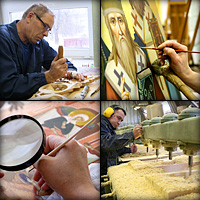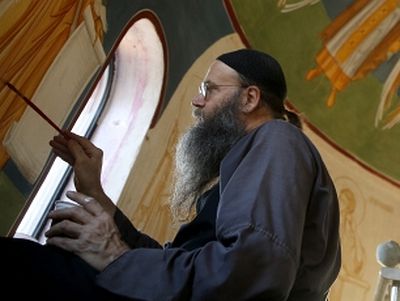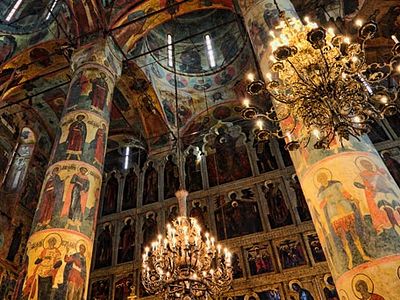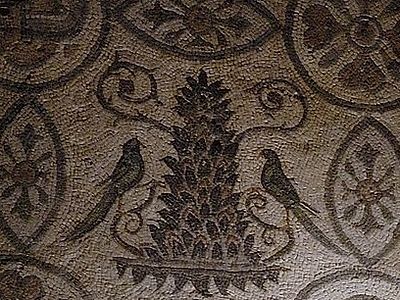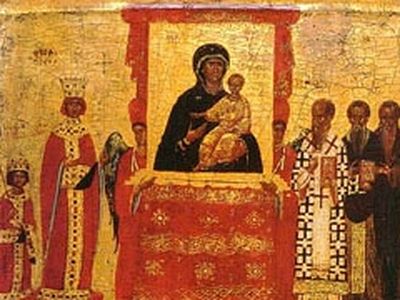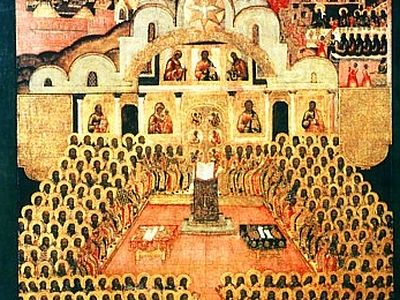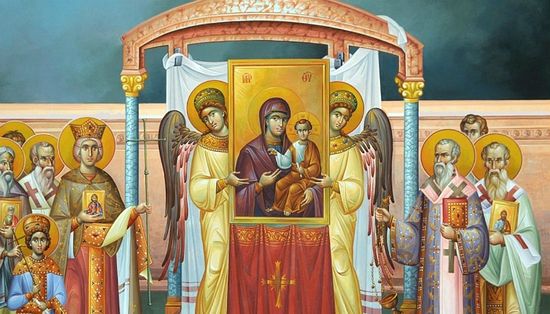
The first Sunday of Great Lent is celebrated as the Triumph of Orthodoxy. This is connected with the victory of the iconodules (those who supported the veneration of sacred images) over the iconoclasts (those who opposed their veneration).
The heart of the victory of Orthodoxy in the restoration of iconography—as well as our veneration of the same—is found in the incarnation of Jesus Christ. Christology is the beginning and end of all true theology, and whenever we get Christ wrong, we get everything else wrong.
The decrees of the Ecumenical Councils were not as much positive pronouncements of ideas (as if God is a collection of our best notions), but rather opposition to wrongideas about both the holy Trinity and the person of Jesus Christ. These wrong ideas (heresies) ultimately lead to other errors when taken to their logical conclusions. Erroneous forms of worship, piety, ecclesiology, and so forth.
During the second period of iconoclasm, led by Emperor Leo V (ca. A.D. 813–820), the Church was blessed by the courage of Theodore, a priest-monk at the Studious monastery in Constantinople. Like John of Damascus a century before him (during the first period of iconoclasm), Theodore opposed iconoclasm with writings and homilies, directly opposing the will of the emperor. However, I think Theodore’s courage is best displayed by something he did, rather than something he said or wrote.
On Palm Sunday in the year 815, Theodore led his fellow monks in a procession through their monastery garden. The garden was surrounded by a high wall, and they processed, singing hymns, with icons held high above their heads, so that only the icons were visible past the top of the wall. This peaceful protest was condemned by Leo, and they all risked punishment or even death by their actions.
When iconoclasm was defeated by the Empress Theodora (A.D. 843), a procession was made to the Great Church in Constantinople on the first Sunday of Lent. This procession marked the victory of Orthodoxy in the victory of icons, and the people held icons high above their heads as they marched into the church for liturgy. Imitating Theodore and his companions, this procession marked a new festival for the Church—one that is still celebrated centuries later.
But again, the celebration is about more than just the restoration and veneration of holy icons; it is a celebration of the victory of the Orthodox Faith itself. That is to say, it is a victory of both right-belief in (and right-worship of) our Lord and Savior Jesus Christ.
The victory of icons was a recognition of the beliefs of the fathers of the Ecumenical Councils and the Symbol of Faith. It was a victory, ultimately, of Christ, for he is the ‘content’ of Holy Tradition in his very being. Tradition is holy because it is the faith of Jesus Christ that lives and breathes in the Spirit-filled Church; it is Tradition because each generation hands it off to the next, which is the meaning of paradosis. A preservation of Tradition is not a preservation of rational truths alone, but is a continuation of the Lord Jesus Christ in and through his Body.
Because Christ humbly took on flesh—becoming one of us and redeeming us from death through his resurrection—we can be united to one another in him, intimately connected through unity in the Body of Christ. And icons are a witness to this unity. They are not only for reminding us of things in the past, but are also real and true connections between us and all the faithful departed; between us and the heavenly hosts; between us and the great cloud of witnesses; between this age and the age to come. They are apocalyptic windows into the reign or kingdom of God, which is present for us in the breaking of bread and the sharing as one loaf in Christ.
The fathers of the Seventh Ecumenical Council recognized the eternal significance of venerating icons, and their words have been repeated by us on every Sunday of Orthodoxy since that day in 843:
As the prophets beheld, as the Apostles have taught . . . as the Church has received . . . as the teachers have dogmatized . . . as the Universe has agreed . . . as Grace has shown forth . . . as Truth has revealed . . . as falsehood has been dissolved . . . as Wisdom has presented . . . as Christ Awarded . . . thus we declare . . . thus we assert . . . thus we preach Christ our true God, and honor as Saints in words, in writings, in thoughts, in sacrifices, in churches, in Holy Icons; on the one hand worshipping and reverencing Christ as God and Lord; and on the other hand honoring as true servants of the same Lord of all and accordingly offering them veneration.
This is the Faith of the Apostles,
this is the Faith of the Fathers,
this is the Faith of the Orthodox,
this is the Faith that has established the Universe.

